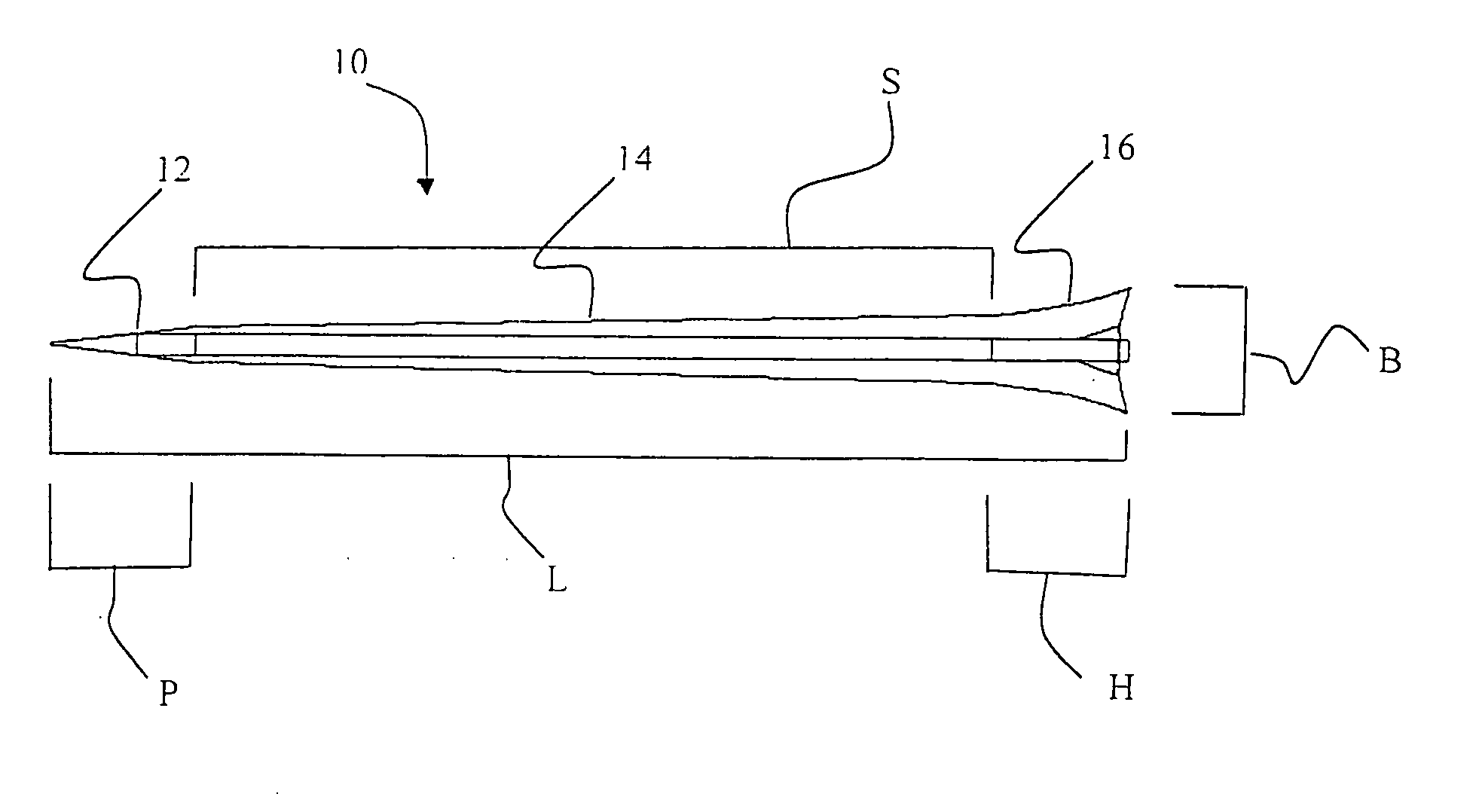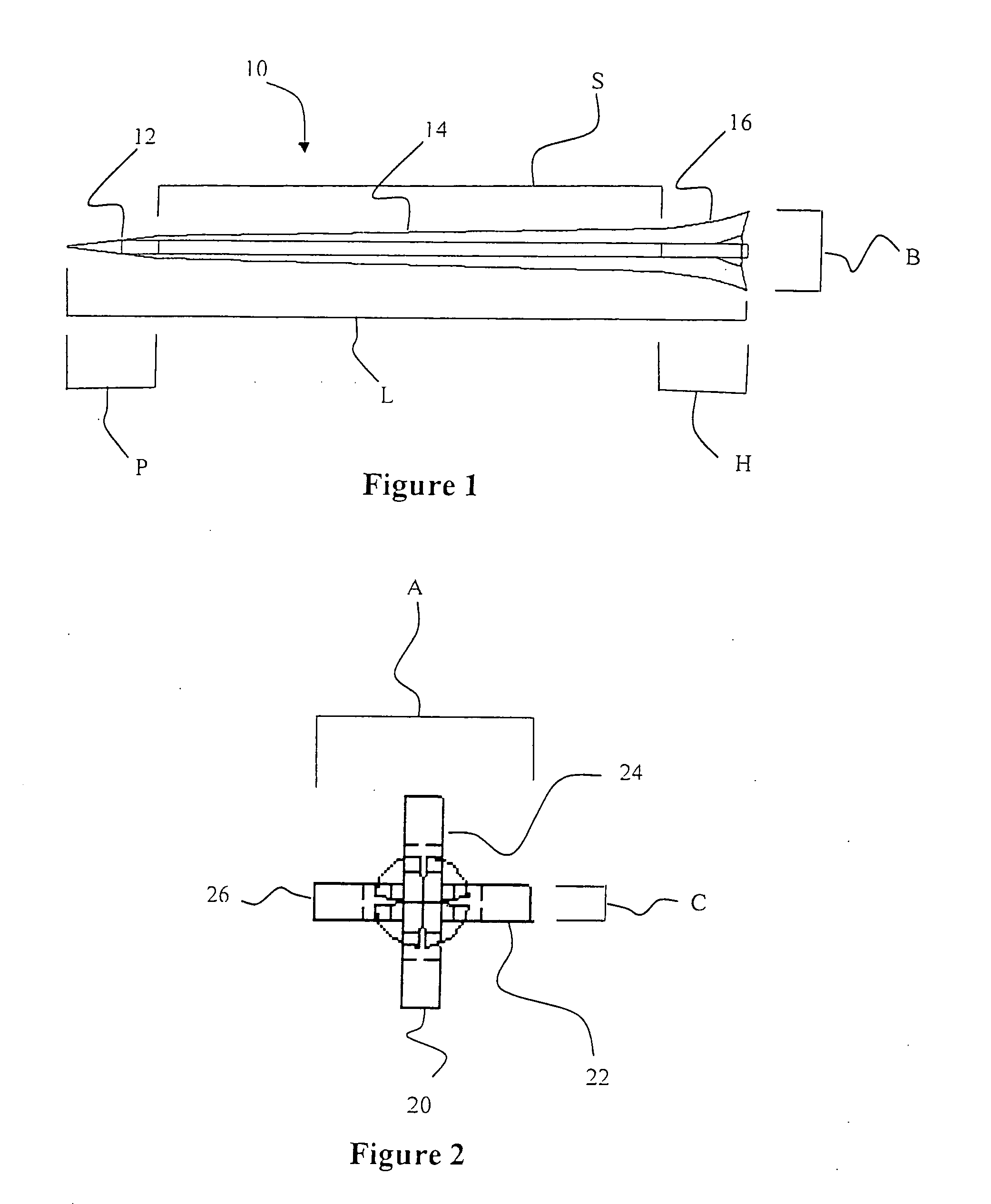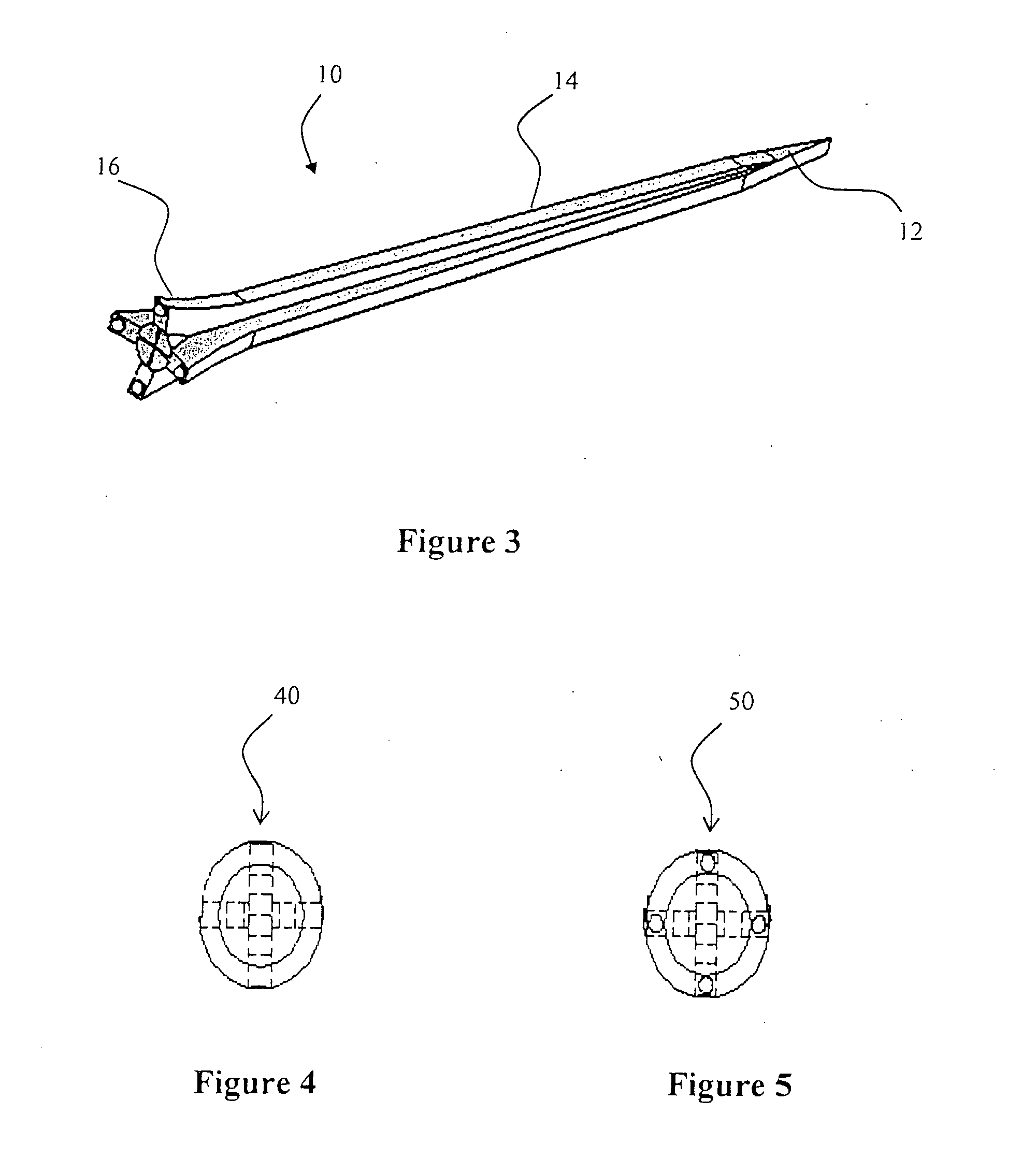Golf Tee
a golf tee and tee technology, applied in the field of golf tees, can solve the problems of difficult driving into heavy ground, high tee mass, and high cost of tees, and achieve the effect of minimizing contact, excellent strength and ground penetration
- Summary
- Abstract
- Description
- Claims
- Application Information
AI Technical Summary
Benefits of technology
Problems solved by technology
Method used
Image
Examples
example 1
[0039]A golf tee of geometry shown in FIG. 1, having a total length of 75 millimeters (mm) and a head of maximum dimensions 8.9 mm, was injection molded from the biodegradable polymeric system Starpol 2189, manufactured by Stanelco Co. The composition is claimed to be a blend of thermoplastic starch, polylactic acid, and mineral filler. The mass of the molded tee was approximately 0.88 gram.
example 2
[0040]A golf tee of geometry shown in FIG. 1, having a total length of 50 mm and a head of maximum dimensions 8.9 mm, was injection molded in the biodegradable polymeric system Starpol 2189, manufactured by Stanelco Co. The mass of the molded tee was approximately 0.72 gram.
Example 3
[0041]A golf tee of geometry shown in FIG. 1, having a total length of 75 mm and a head of maximum dimensions 8.9 mm, was produced using a photolithographic technique with an epoxide acrylate resin. The mass of the molded tee was approximately 0.83 gram.
example 4
[0042]A golf tee of geometry shown in FIG. 1, having a total length of 75 mm, and a head of maximum dimensions 9.2 mm, and a shaft arm width of 2.1 mm, was injection molded in a biodegradable polymeric system Starpol 2189, manufactured by Stanelco Co. The composition is claimed to be a blend of thermoplastic starch, polyvinyl alcohol and mineral filler; the mass of the molded tee was approximately 1.1 grams.
Assessment of Ground Penetration
[0043]The golf tee was manually pushed into light loam and heavy dry clay soil compositions found on a typical golf course. The ease of penetration of the tee into the ground was assessed together with the shape of the hole made by the golf tee. A standard wood golf tee and a new Evolve Golfs EPOCH™ golf tee marketed by Evolve Golf, Inc., were used for comparison.
Golf teeLight loamHeavy dry clayWoodEasy to push in, someEasy to push in, distortiondistortion of the hole, slightof the hole, slight instabilityinstability in holding golfin holding golf ...
PUM
 Login to View More
Login to View More Abstract
Description
Claims
Application Information
 Login to View More
Login to View More - R&D
- Intellectual Property
- Life Sciences
- Materials
- Tech Scout
- Unparalleled Data Quality
- Higher Quality Content
- 60% Fewer Hallucinations
Browse by: Latest US Patents, China's latest patents, Technical Efficacy Thesaurus, Application Domain, Technology Topic, Popular Technical Reports.
© 2025 PatSnap. All rights reserved.Legal|Privacy policy|Modern Slavery Act Transparency Statement|Sitemap|About US| Contact US: help@patsnap.com



